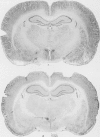Abstract
1. Unit recordings were made from the hypothalamus in anaesthetized male rats using steel or glass micro-electrodes.
2. Stimuli which are known to release vasopressin and oxytocin (electrical stimulation of the central end of the severed right vagus nerve and intracarotid injection of CaCl2 solution) also excite units in the supraoptic and paraventricular nuclei. In addition, these units are excited by intracarotid injections of carbachol, acetylcholine and NaCl (5%) which are less effective stimuli for vasopressin release.
3. These stimuli also excite units from which potentials can be evoked by stimulation of the pituitary stalk and which are likely to be neurosecretory neurones. Neurosecretory neurones can conduct electrical impulses like other less specialized nerve cells. Estimations of conduction velocity range between 0·4 and 1·3 m/sec.
4. The proportion of units in the supraoptic and paraventricular nuclei which are excited and the degree of excitation corresponds approximately to the amount of vasopressin released by the stimuli. In addition, excitation of the supraoptic nucleus seems to be more directly associated with vasopressin release and excitation of the paraventricular nucleus with oxytocin release.
Full text
PDF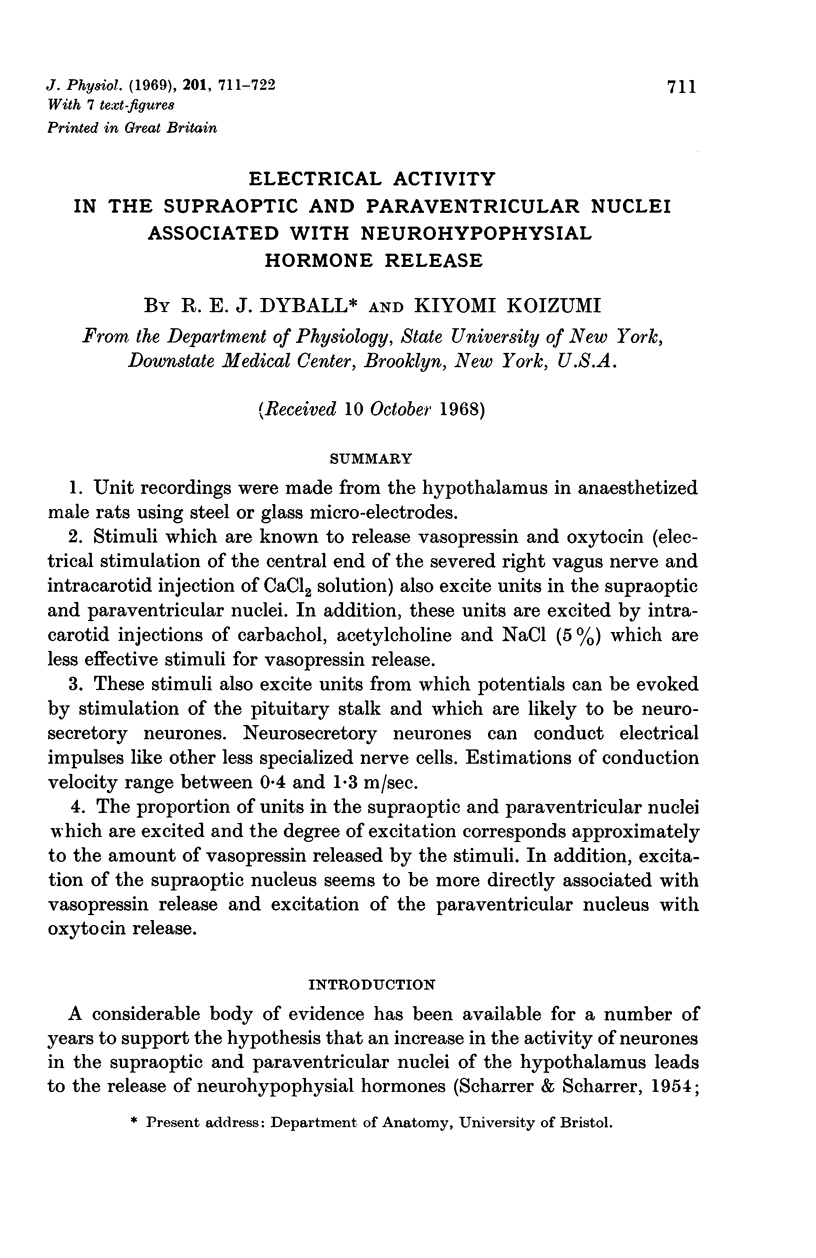

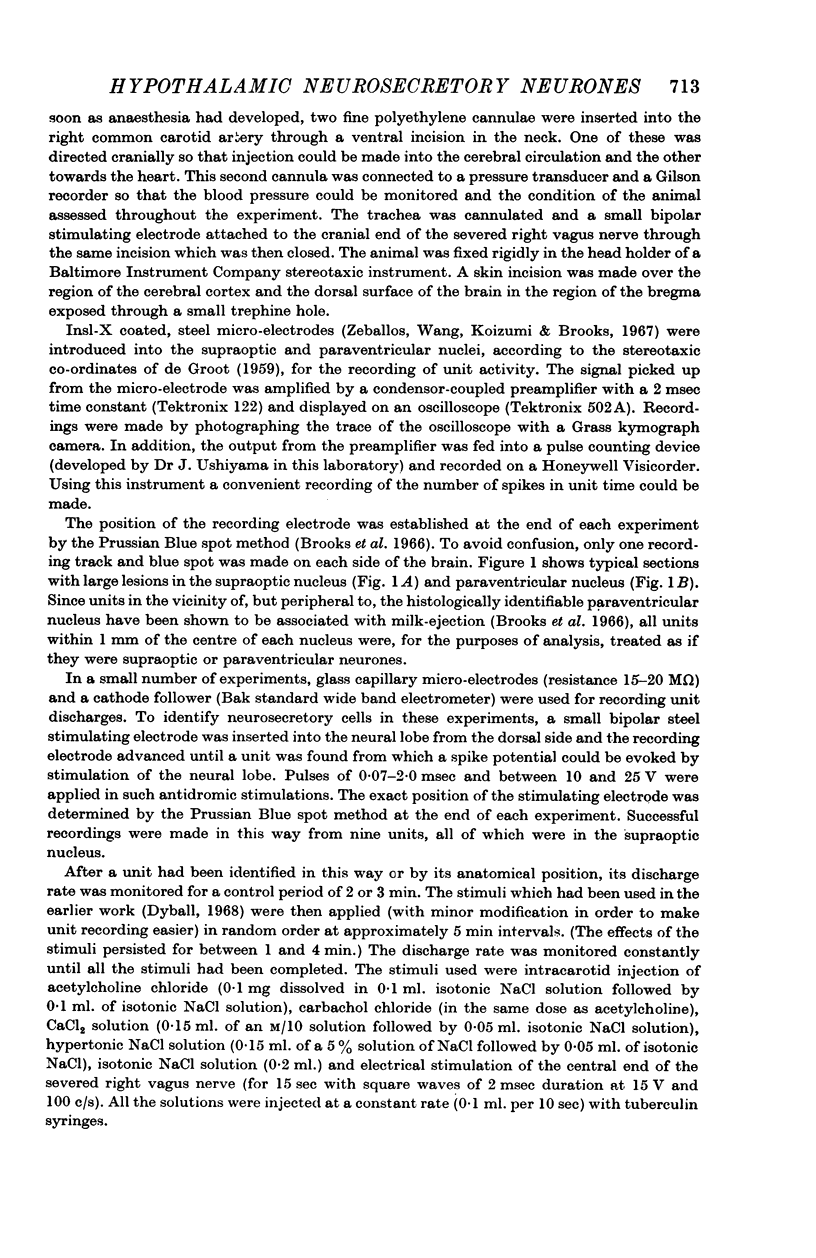
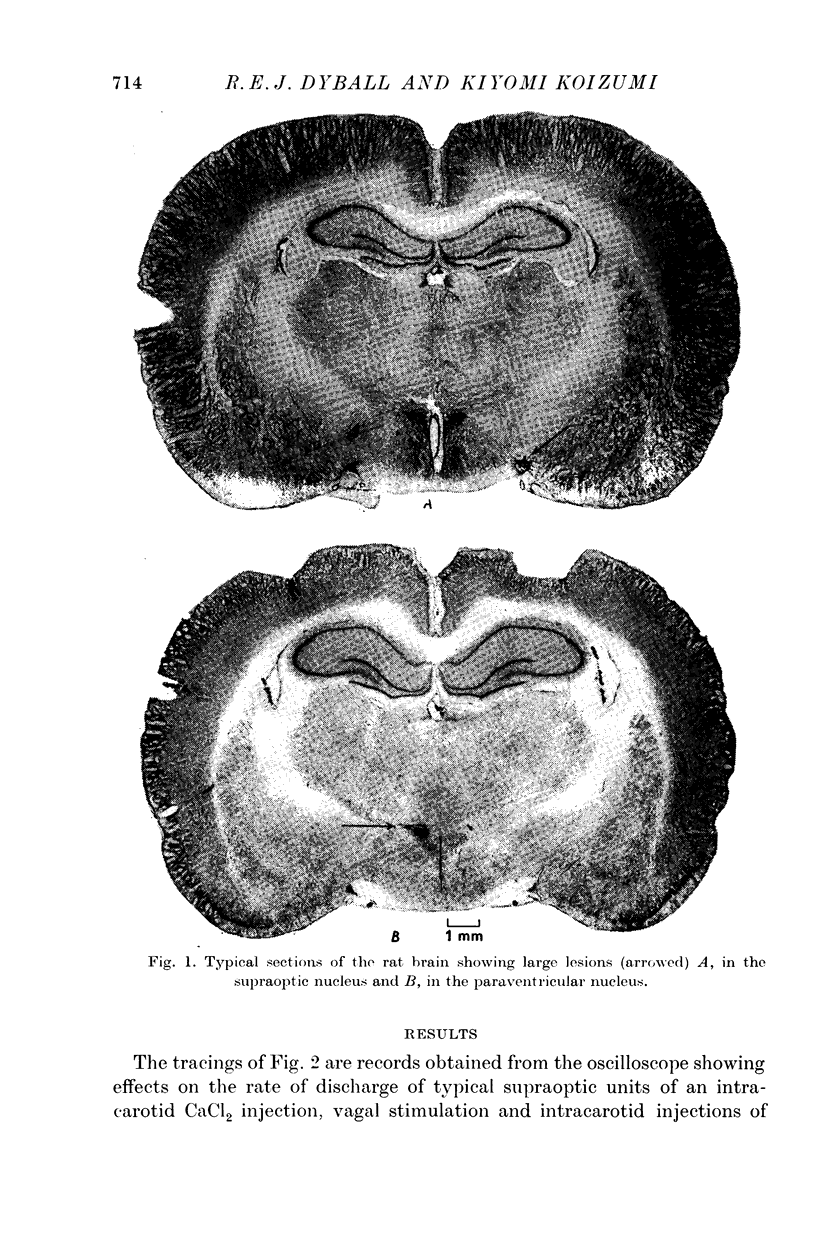
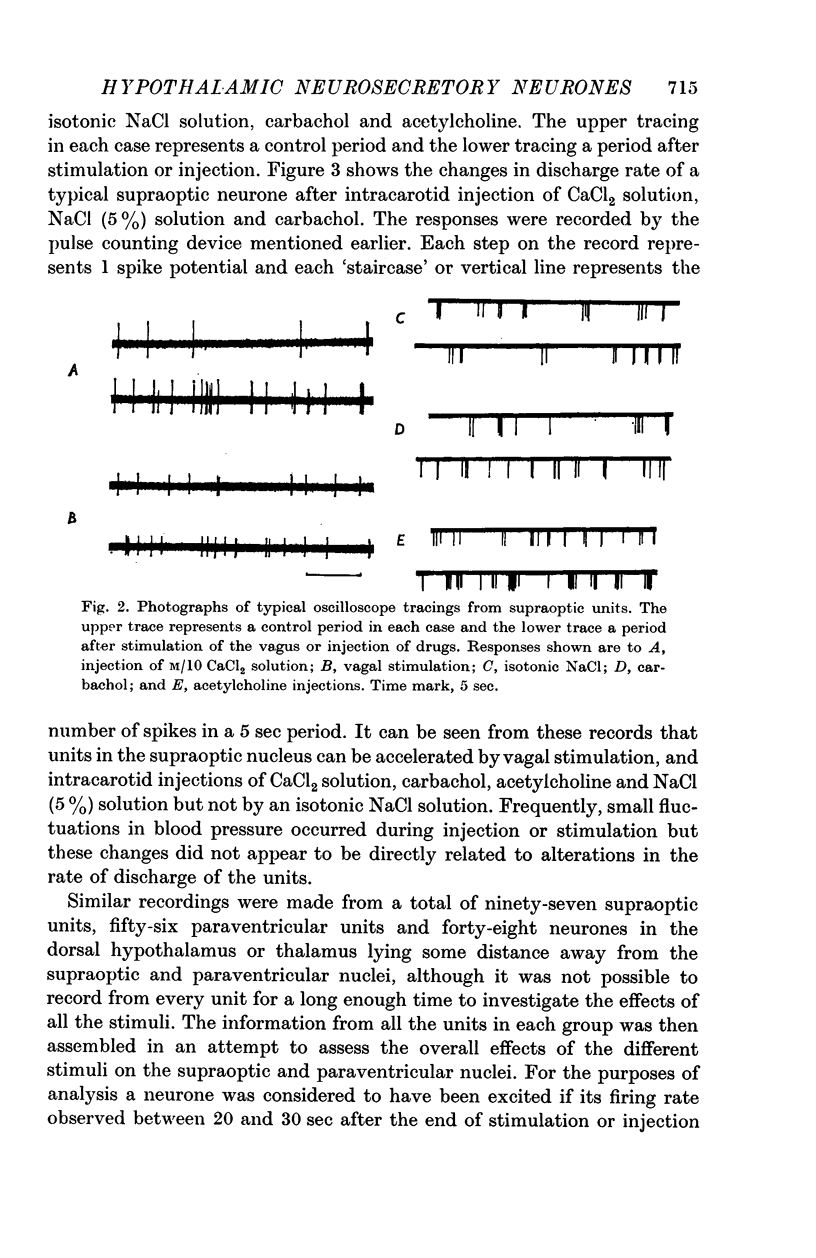
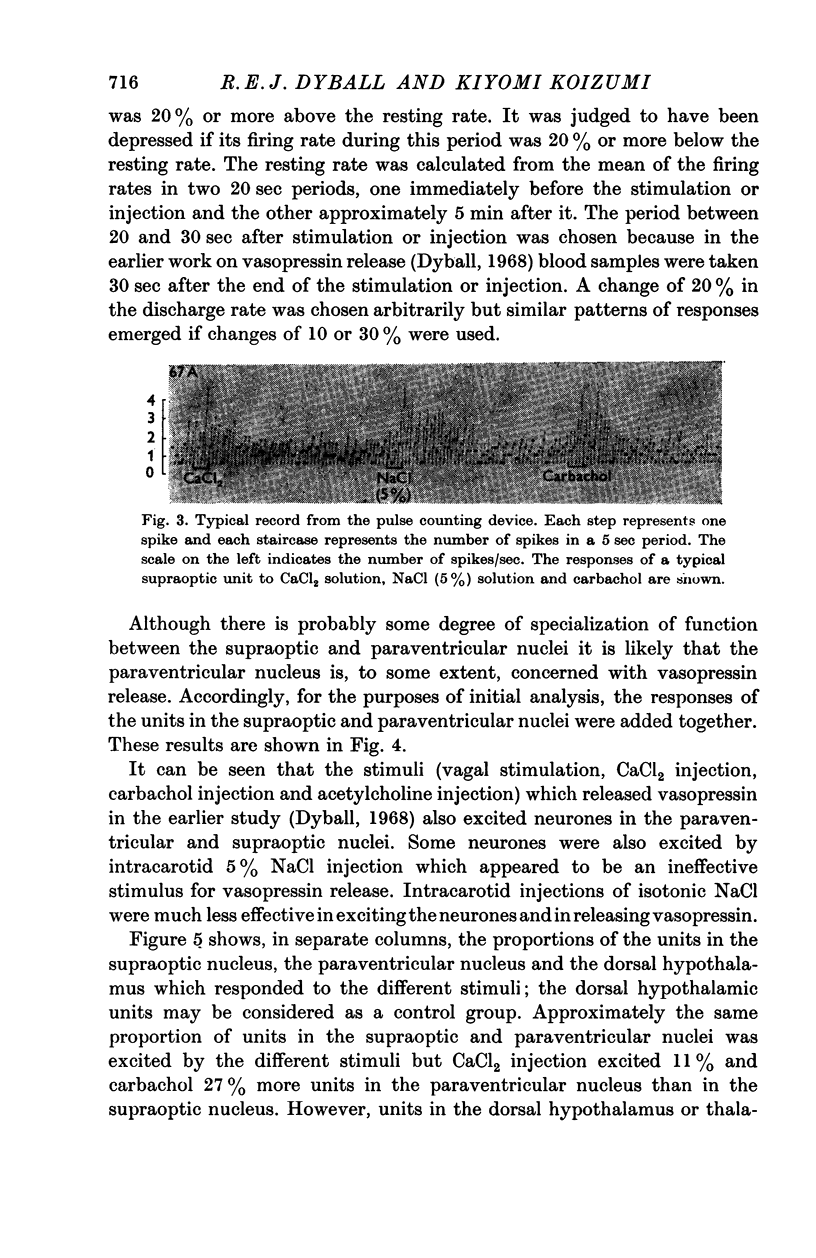
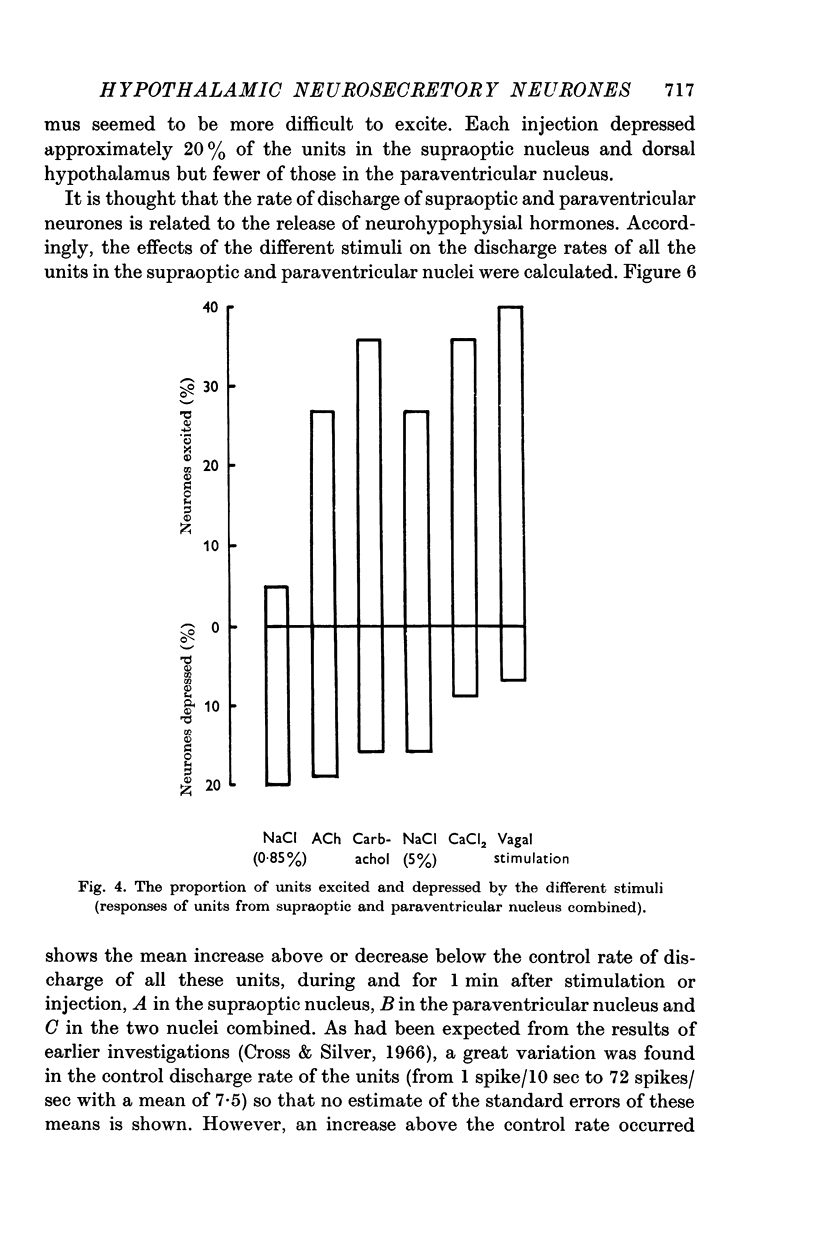
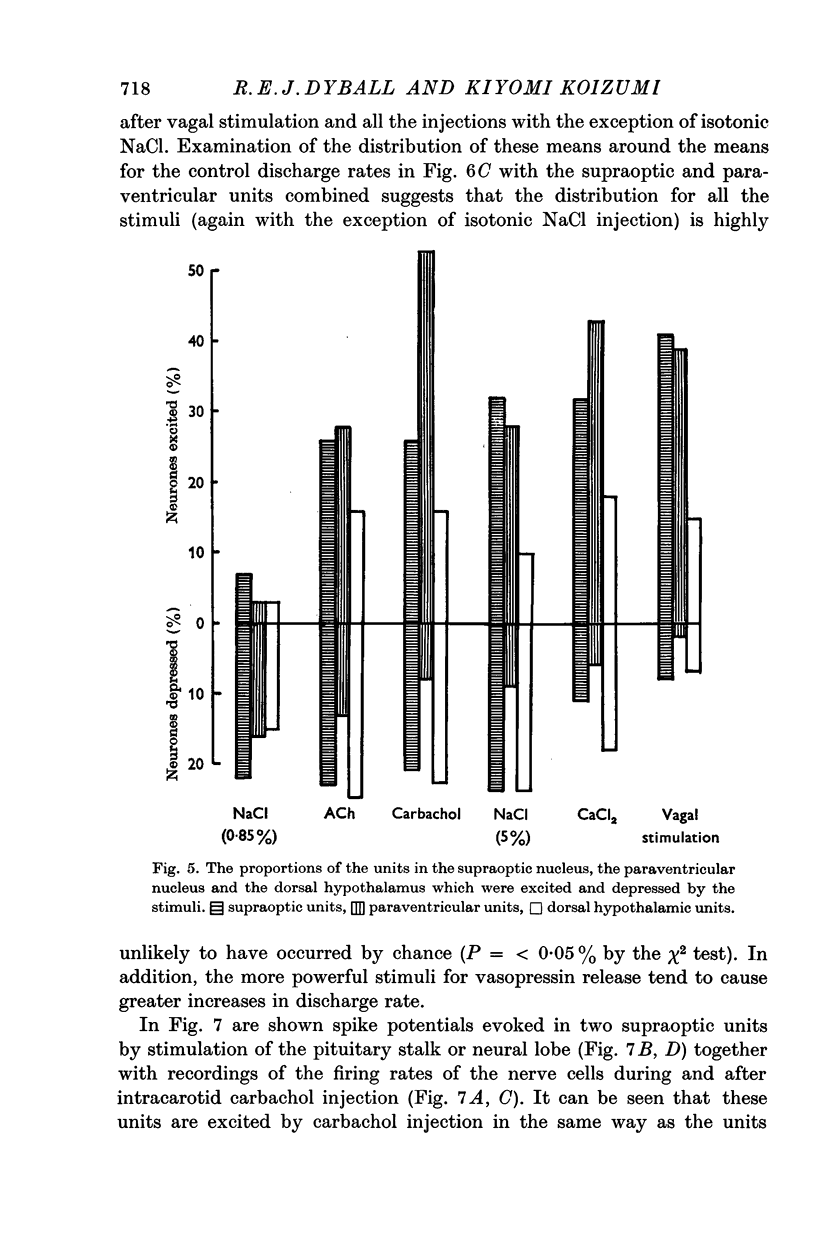

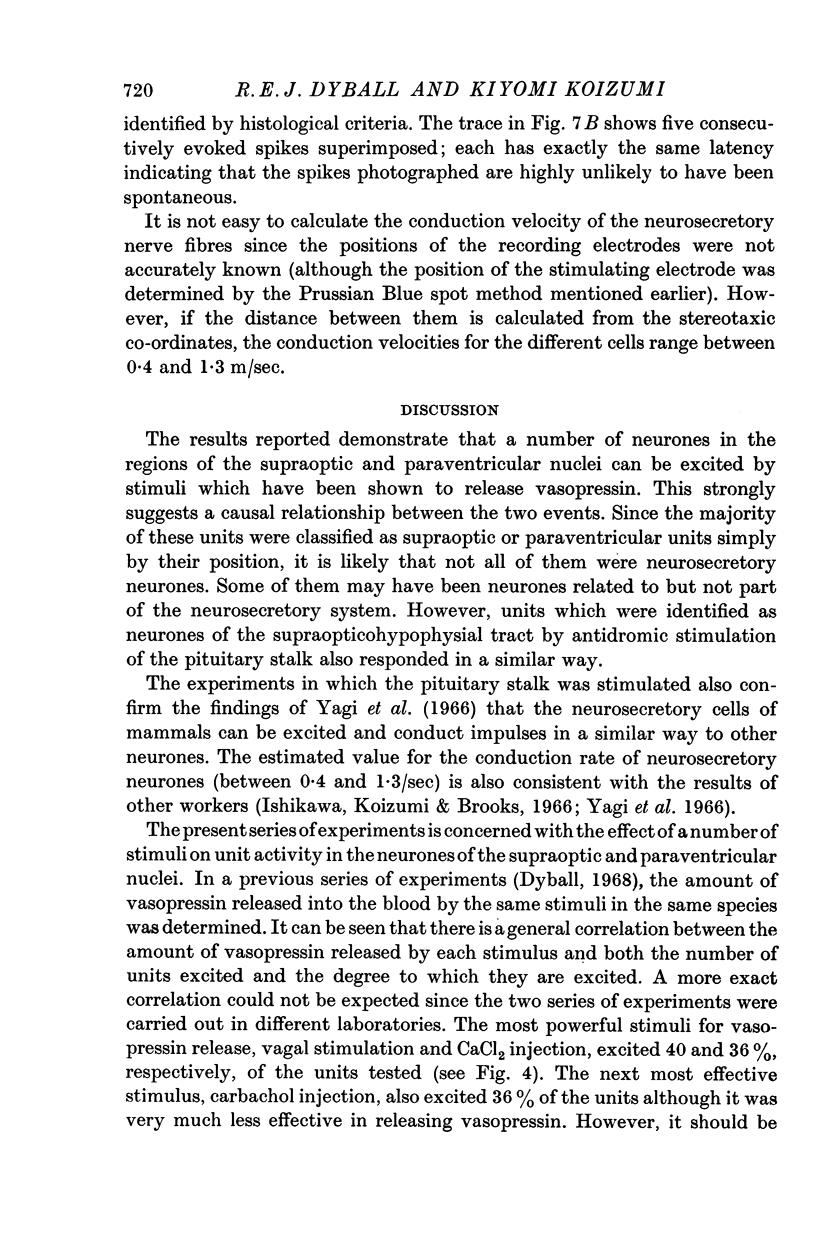
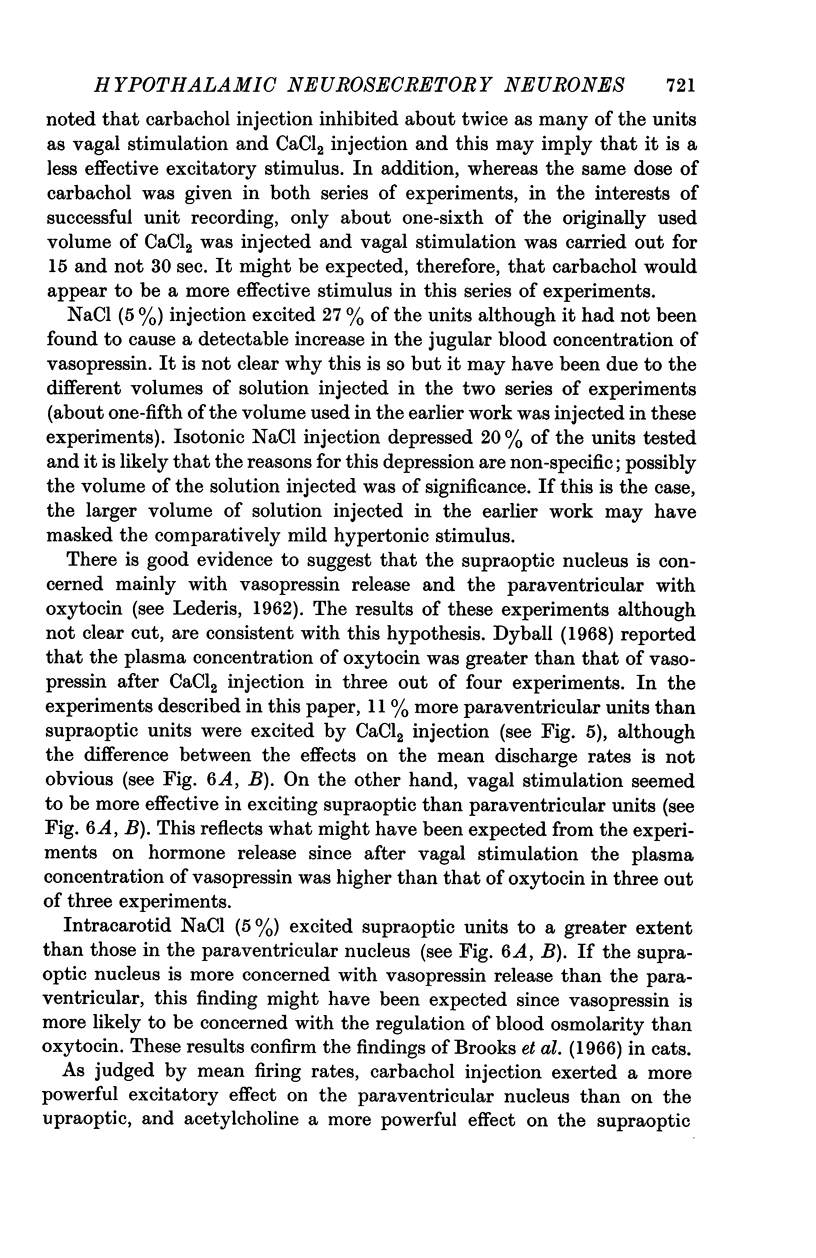
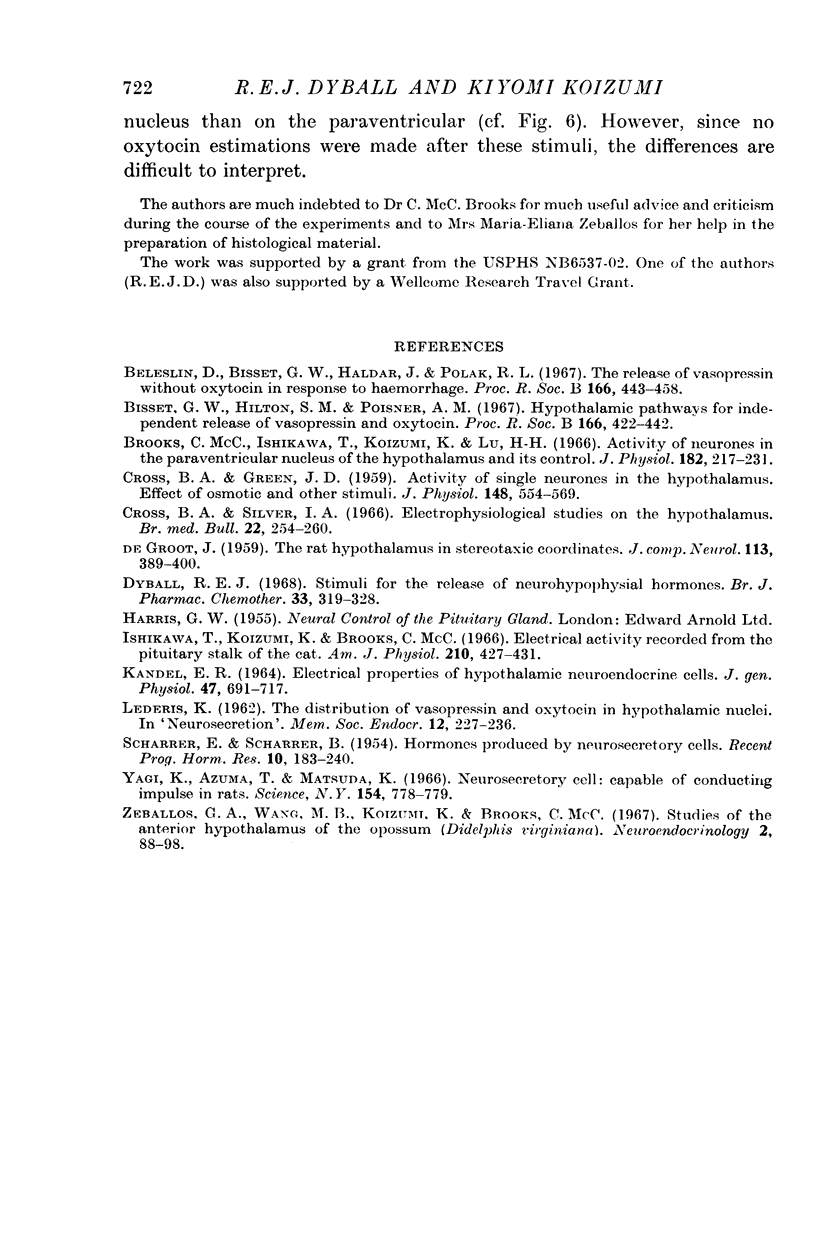
Images in this article
Selected References
These references are in PubMed. This may not be the complete list of references from this article.
- Brooks C. M., Ishikawa T., Koizumi K., Lu H. H. Activity of neurones in the paraventricular nucleus of the hypothalamus and its control. J Physiol. 1966 Jan;182(1):217–231. doi: 10.1113/jphysiol.1966.sp007820. [DOI] [PMC free article] [PubMed] [Google Scholar]
- CROSS B. A., GREEN J. D. Activity of single neurones in the hypothalamus: effect of osmotic and other stimuli. J Physiol. 1959 Oct;148:554–569. doi: 10.1113/jphysiol.1959.sp006306. [DOI] [PMC free article] [PubMed] [Google Scholar]
- Cross B. A., Silver I. A. Electrophysiological studies on the hypothalamus. Br Med Bull. 1966 Sep;22(3):254–260. doi: 10.1093/oxfordjournals.bmb.a070483. [DOI] [PubMed] [Google Scholar]
- Dyball R. E. Stimuli for the release of neurohypophysial hormones. Br J Pharmacol Chemother. 1968 Jun;33(2):319–328. doi: 10.1111/j.1476-5381.1968.tb00993.x. [DOI] [PMC free article] [PubMed] [Google Scholar]
- Ishikawa T., Koizumi K., Brooks C. M. Electrical activity recorded from the pituitary stalk of the cat. Am J Physiol. 1966 Mar;210(3):427–431. doi: 10.1152/ajplegacy.1966.210.3.427. [DOI] [PubMed] [Google Scholar]
- KANDEL E. R. ELECTRICAL PROPERTIES OF HYPOTHALAMIC NEUROENDOCRINE CELLS. J Gen Physiol. 1964 Mar;47:691–717. doi: 10.1085/jgp.47.4.691. [DOI] [PMC free article] [PubMed] [Google Scholar]
- Yagi K., Azuma T., Matsuda K. Neurosecretory cell: capable of conducting impulse in rats. Science. 1966 Nov 11;154(3750):778–779. doi: 10.1126/science.154.3750.778. [DOI] [PubMed] [Google Scholar]
- de GROOT The rat hypothalamus in stereotaxic coordinates. J Comp Neurol. 1959 Dec;113:389–400. doi: 10.1002/cne.901130304. [DOI] [PubMed] [Google Scholar]



